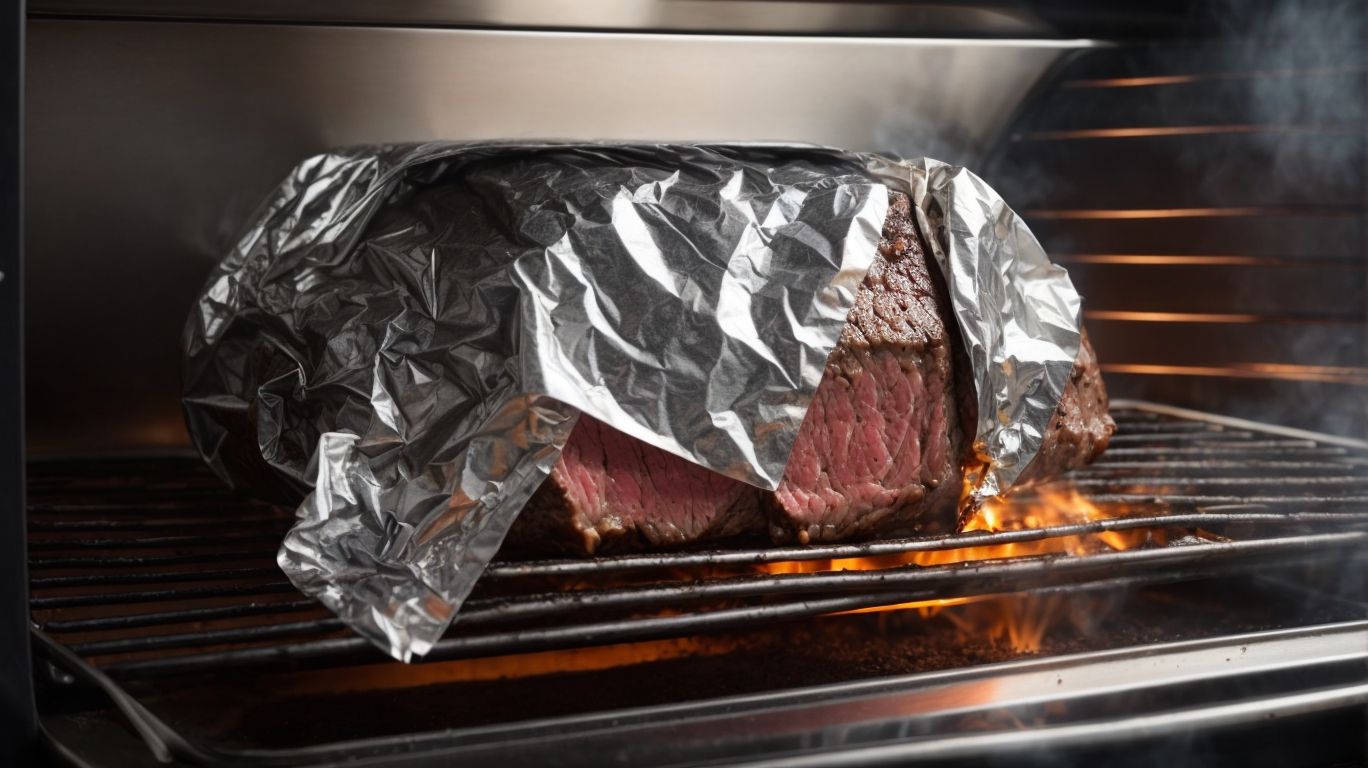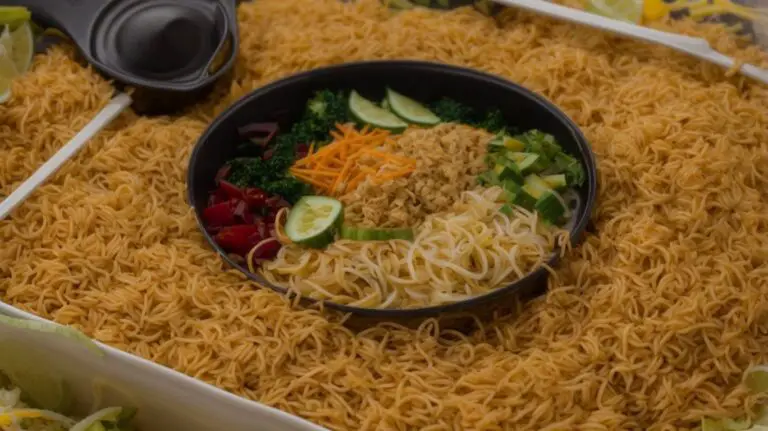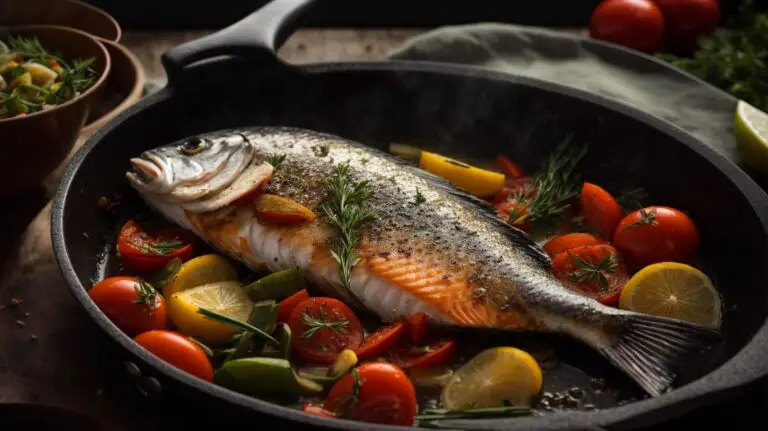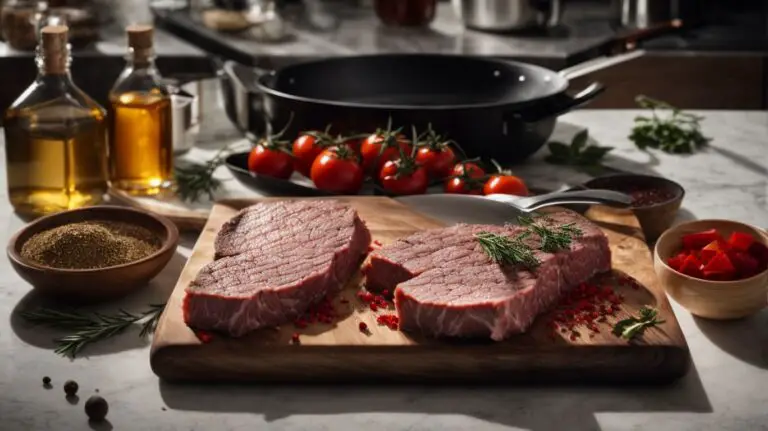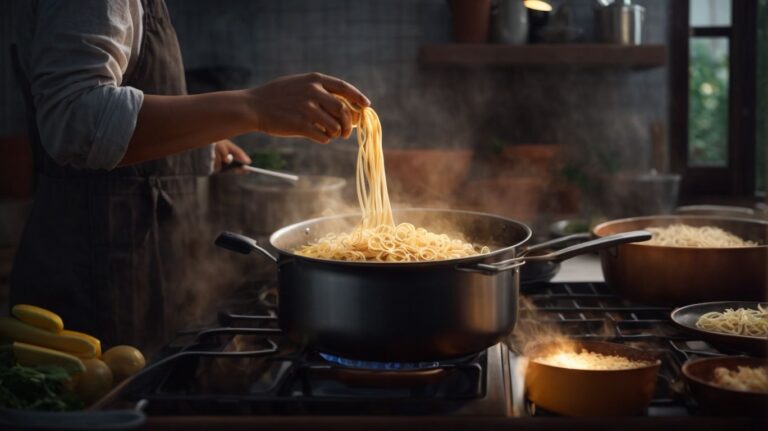How to Cook Steak in the Oven With Foil?
Looking for a foolproof way to cook the perfect steak in the oven?
In this article, we will explore the benefits of using foil to cook steak, such as keeping it moist and ensuring even cooking.
We will also discuss the best types of steak to use for this method and how to prepare them for cooking.
From preheating the oven to serving suggestions, we’ve got you covered every step of the way.
Get ready to elevate your steak game with this simple yet delicious technique!
Key Takeaways:
Why Use Foil to Cook Steak in the Oven?
Using foil to cook steak in the oven offers multiple benefits, including retaining moisture, enhancing flavors, and simplifying the cleaning process.
When you encase steak in a foil packet, it creates a sealed environment that locks in moisture, ensuring your steak stays juicy and tender throughout the cooking process. The foil also helps in infusing the meat with various flavors, whether it be marinades, herbs, or spices, resulting in a more flavorful and aromatic dish.
Oven cooking with foil minimizes the mess and simplifies cleanup – no more scrubbing of pans or grates. It’s as simple as crumpling up the foil and disposing of it, making it a convenient option for busy home cooks.
Keeps the Steak Moist
Cooking steak in foil helps in preserving its natural juices, resulting in a tender and moist texture that enhances the overall dining experience.
Retaining moisture in steak is vital for keeping it juicy and flavorful. When steak is wrapped in foil, the heat is trapped, creating a steamy environment that prevents the meat from drying out. The juices released during cooking are contained within the foil packet, infusing the steak with its own rich flavors. This cooking method not only ensures a succulent end result but also makes cleanup a breeze. It’s a simple yet effective way to achieve a perfectly moist and tender steak every time.
Helps with Even Cooking
Foil acts as a barrier that distributes heat evenly around the steak, ensuring consistent cooking and avoiding hot spots that might lead to uneven doneness.
This method is particularly useful when cooking thicker cuts of steak, as it allows for a more controlled cooking process. By wrapping the steak in foil and placing it on the oven rack, you create a mini-oven environment that helps regulate the temperature and prevents overcooking or undercooking.
- Using foil can lock in moisture, keeping the steak juicy and tender throughout the cooking process.
- It’s essential to monitor the internal temperature with a meat thermometer to ensure the steak reaches the desired level of doneness without guesswork.
- By using foil in this way, you can achieve a perfectly cooked steak with uniform color and texture, elevating your dining experience.
Easy Clean-up
After cooking steak in foil, cleanup becomes a breeze as the foil can be simply disposed of, reducing the hassle of scrubbing pans or grills.
Using foil to cook steak in the oven not only saves time during meal preparation but also streamlines the post-dinner cleanup process. With foil packets, there’s no need to soak or wash dishes extensively, making it an easy and convenient cooking method for busy weeknights. Simply discard the used foil, and you’re left with a spotless kitchen without the lingering smell of grill grease or burnt residues. This method is a game-changer for those who value simplicity in their cooking routines.
What Type of Steak is Best for This Method?
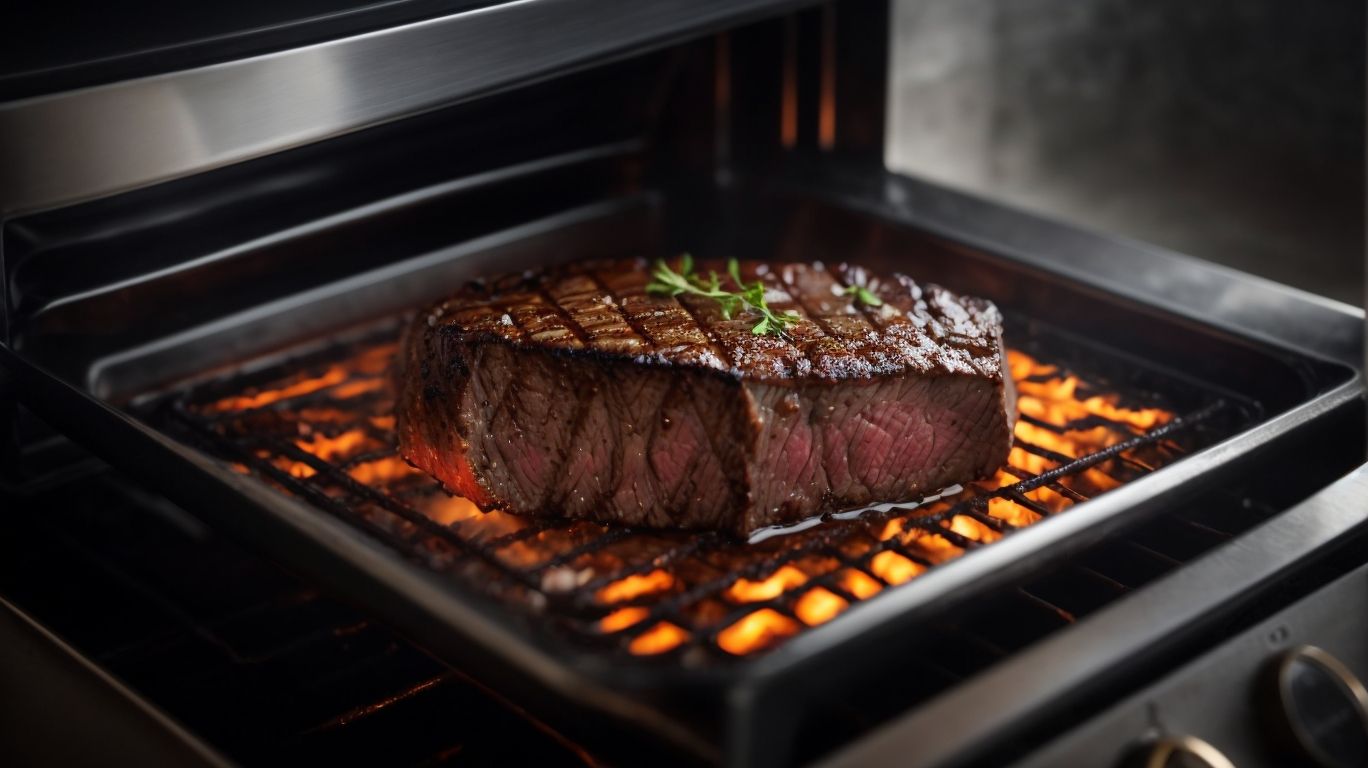
Credits: Poormet.Com – Paul Thompson
When using foil to cook steak in the oven, certain cuts such as ribeye, New York strip, and filet mignon are ideal choices due to their tenderness and flavor profile.
Not only do these cuts offer a luxurious dining experience with their rich marbling, but they also retain moisture well when cooked in foil, resulting in juicy and succulent steaks. The ribeye’s bold, beefy flavor shines through when oven-cooked in foil, while the New York strip boasts a balanced combination of tenderness and robust taste.
On the other hand, the filet mignon is renowned for its unparalleled tenderness, making it a perfect candidate for oven cooking in foil as it stays moist and delicate.
If looking for a leaner option that still delivers on flavor, consider using top sirloin steak, a versatile cut that benefits from a good marinate before being wrapped in foil and cooked to perfection.
Ribeye
Ribeye steak, with its rich marbling and intense beefy flavor, is a popular choice for cooking in foil in the oven, delivering a juicy and succulent dining experience.
One of the key characteristics of a ribeye steak that makes it ideal for foil cooking in the oven is its exceptional marbling. The intricate intramuscular fat distribution not only imparts a buttery texture but also ensures a melt-in-your-mouth experience after cooking.
The natural flavor profile of a ribeye steak shines through when cooked in foil, enhancing its already robust beefy taste. The meat retains its juices, locking in moisture and amplifying the savory notes.
To elevate the flavors, consider seasoning your ribeye steak with a sprinkle of red pepper before sealing it in the foil for cooking. This adds a subtle kick and complements the richness of the meat.
New York Strip
New York strip steak, known for its robust beef flavor and moderate tenderness, is another excellent choice for preparing in foil in the oven, offering a delightful dining experience.
This cut originates from the short loin, which explains its tenderness. The intense flavors of the New York strip steak are well-maintained when cooked in foil; this method helps retain the natural juices, ensuring a juicy outcome. To enhance its taste further, season the steak generously with salt, pepper, garlic powder, and a hint of onion powder before sealing it in the foil packet. The crimped foil packet method locks in moisture, resulting in a tender, flavorful steak. Pair this dish with grilled onions for an added layer of savory sweetness.
Filet Mignon
Filet mignon, prized for its tenderness and mild flavor, is a premium steak choice that works exceptionally well when cooked in foil in the oven, providing a luxurious dining experience.
Known as the most tender cut of beef, filet mignon melts in your mouth with each bite, making it a favorite among steak enthusiasts. The delicate flavor of this steak is enhanced through the oven-baking process, allowing the meat to retain its natural juices and tenderness.
Cooking time for filet mignon in foil is crucial to maintain its perfect texture, typically requiring around 25-30 minutes for a medium-rare outcome. Pairing filet mignon with roasted vegetables like asparagus or garlic-infused mushrooms further elevates the dish, offering a delightful contrast of flavors and textures.
Preparing the Steak
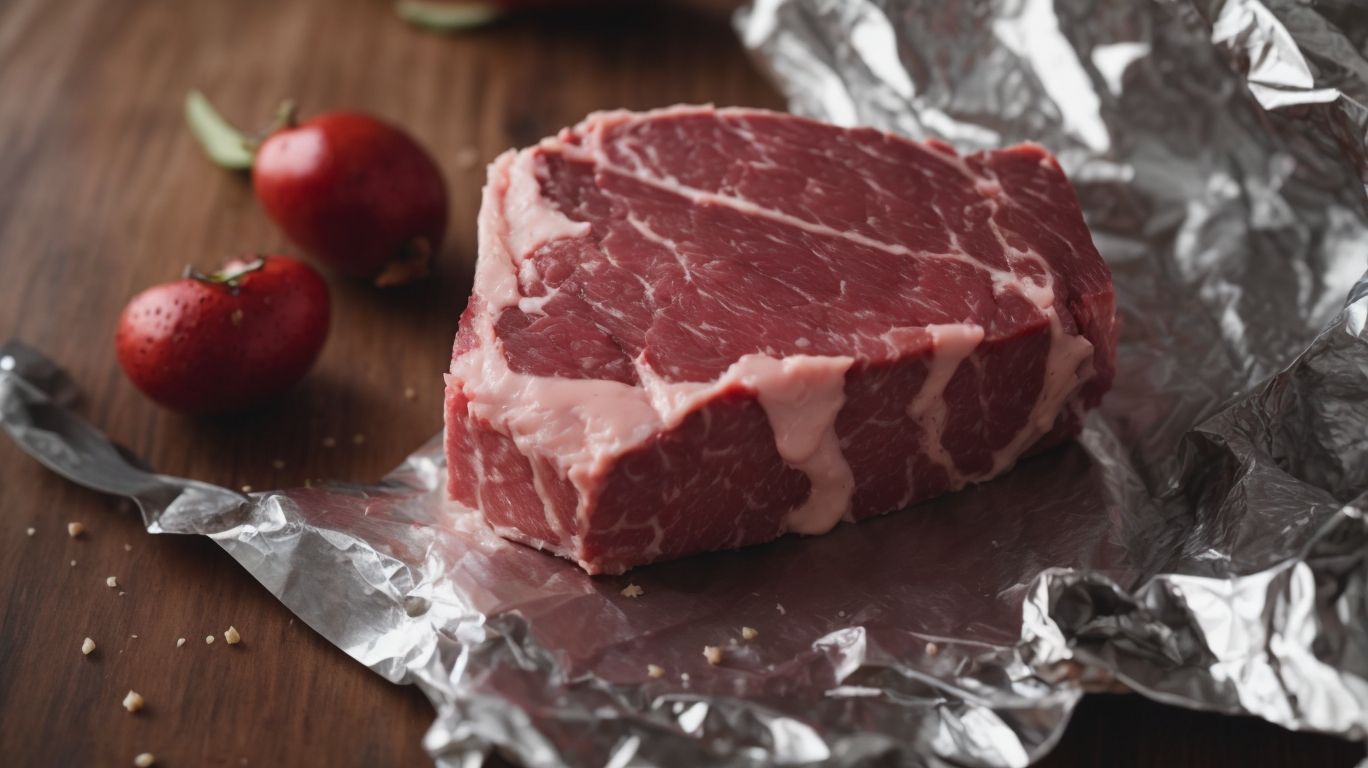
Credits: Poormet.Com – Mark Sanchez
Before cooking steak in foil in the oven, proper preparation is crucial, including seasoning the steak and allowing it to reach room temperature for optimal results.
In terms of seasoning, a blend of garlic, thyme, and paprika can elevate the flavors of the steak. Rub the seasoning mixture generously on both sides, making sure to coat the entire surface for a well-rounded taste profile.
Temperature is another key aspect to consider. Preheat the oven to a high temperature, around 400-450°F, to ensure a good sear on the steak before sealing it in the foil. This initial step helps lock in the juices and enhances the caramelization process.
Marinating the steak beforehand can also enhance its tenderness and flavor. Consider marinating the steak in a mixture of olive oil, balsamic vinegar, and your choice of herbs for at least 30 minutes to allow the flavors to penetrate the meat.
Seasoning the Steak
Seasoning the steak with a blend of salt, pepper, garlic, and herbs like thyme or paprika enhances its flavor profile, ensuring a delicious culinary experience when cooked in foil.
When preparing a steak, the choice of seasonings can greatly impact the final taste on your plate. The combination of salt and pepper forms the base, enhancing the natural flavors of the meat, while garlic adds depth and complexity. Incorporating herbs such as thyme or paprika can introduce a unique twist to the dish, elevating it to a gourmet level.
To further enhance the flavors, consider marinating the steak in a mixture of olive oil and lemon juice before cooking. This technique not only tenderizes the meat but also imparts a citrusy brightness that complements the savory elements of the seasoning blend.
Bringing the Steak to Room Temperature
Allowing the steak to come to room temperature before cooking helps in achieving more even cooking and optimal flavor development throughout the cut.
By doing so, the steak cooks more evenly as the heat can penetrate the meat more effectively, resulting in a juicier and more tender final dish. Bringing the steak to room temperature also speeds up the cooking process, making it a quicker and easy meal preparation method. This quick and effortless step ultimately leads to a more flavorful dining experience, allowing the natural tastes and seasonings to permeate the meat thoroughly.
Cooking the Steak in the Oven with Foil
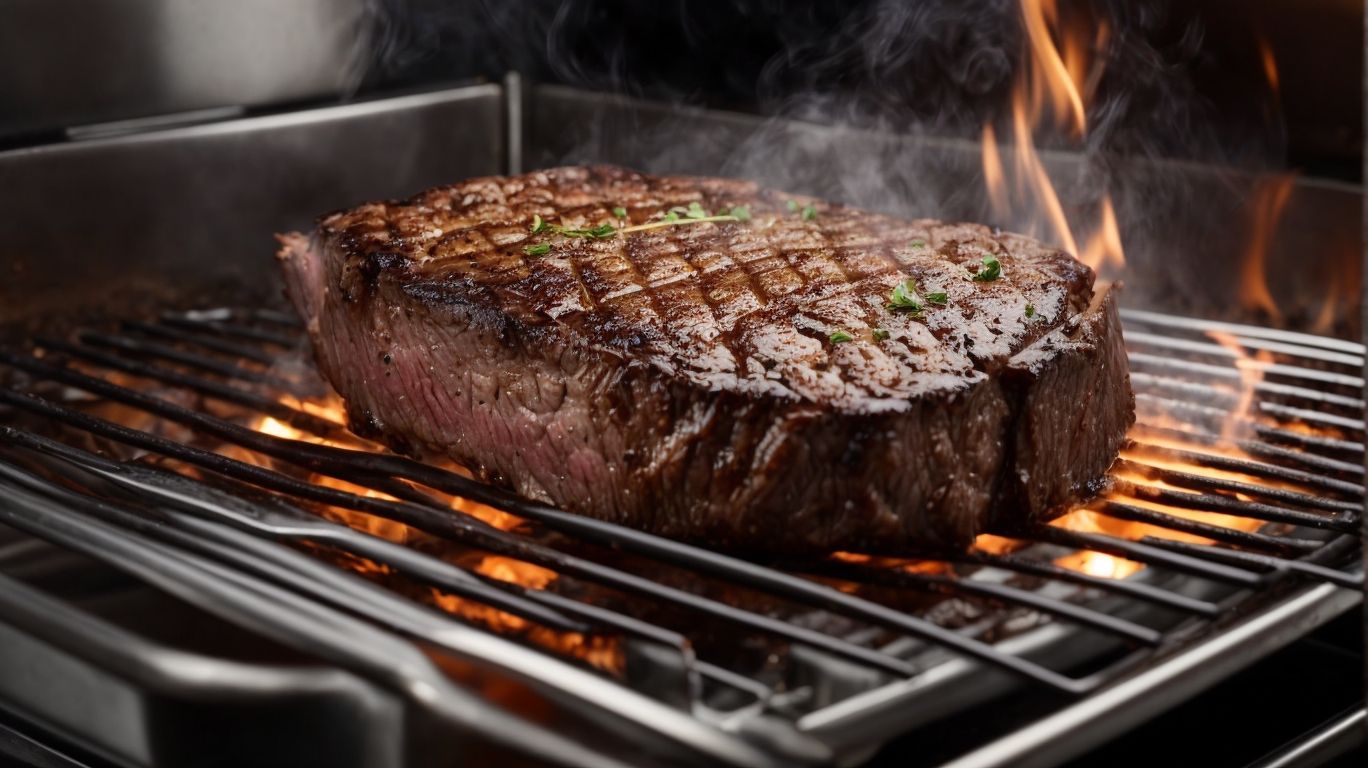
Credits: Poormet.Com – Randy Adams
The process of cooking steak in the oven with foil involves preheating the oven, wrapping the seasoned steak securely in foil, and following specific cooking times for desired levels of doneness.
Before putting the steak in the oven, it’s crucial to preheat the oven to ensure even cooking. Setting the oven to grilled or broil mode at a high temperature will help achieve that perfect sear. Then, take a large piece of foil and place the seasoned steak in the center. Wrap the foil tightly around the steak, ensuring no gaps for the steak temperature to remain consistent. For a medium-rare steak, cook for about 15-20 minutes, and for well-done, extend the cooking time to 25-30 minutes.
Preheating the Oven
Preheating the oven to the recommended temperature ensures that the steak cooks evenly and efficiently once placed inside the foil packet for baking.
Proper preheating is crucial for sealing in the juices of the steak and achieving that perfect tenderness. When the oven is not preheated adequately, the cooking time gets extended, resulting in potential drying out of the steak. For optimal results, it’s recommended to preheat the oven to around 400°F to 450°F, depending on the desired level of doneness. This temperature range allows the steak to cook through while retaining its succulence.
Remember, the temperature setting also plays a vital role in ensuring that the broccoli and asparagus in the foil packet cook to the ideal crisp-tender texture. By preheating the oven correctly, you create the ideal environment for these vegetables to steam and absorb the flavors, enhancing the overall taste of the dish.
Wrapping the Steak in Foil
Carefully wrapping the seasoned steak in foil ensures that the flavors are sealed in and the meat cooks to perfection, resulting in a delightful dining experience.
When wrapping the steak, make sure to create a tight seal to trap in all the juices and aroma. This not only enhances the taste but also helps in retaining moisture during cooking, preventing the meat from drying out. Securing the packet properly is key to achieving succulent and tender steak every time.
Wrapping the steak in foil also has practical benefits beyond flavor enhancement. It is an excellent method for storing leftovers in the freezer for later enjoyment, as the foil protects the meat from freezer burn and preserves its quality. This technique makes reheating leftovers a breeze, keeping the steak moist and flavorful.
Cooking Times for Different Levels of Doneness
Understanding the cooking times for varying levels of doneness is essential when preparing steak in foil, ensuring that the meat reaches the desired level of juiciness and tenderness.
For those aiming for a rare steak, the secret lies in a quick cook. This typically involves searing the meat for about 2 minutes on each side, preserving its rich pink center.
On the other hand, a medium-rare steak requires a touch more time on the grill. Cook it for approximately 3-4 minutes per side to achieve that succulent pink center with a slightly warmer core.
For a medium steak, you’ll want to grill it for 5-6 minutes per side, providing a balance between tenderness and cooked-through perfection.
And for those who prefer their steak well-done, cook it for about 7-8 minutes per side to ensure optimal safety and a fully cooked center.
Resting and Serving the Steak
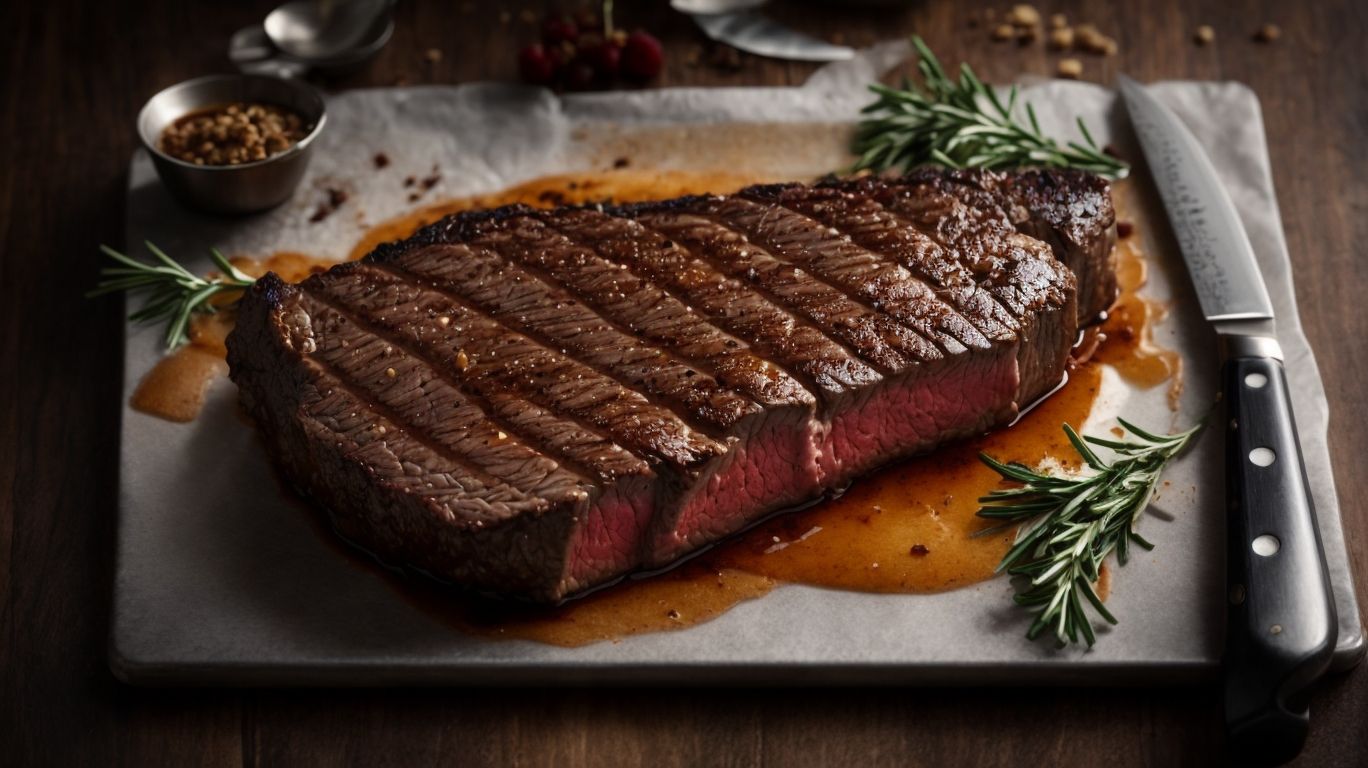
Credits: Poormet.Com – Arthur Rivera
Allowing the steak to rest after baking in foil is crucial for redistributing the juices, ensuring optimal tenderness, and serving it with complementary sides for a delectable meal.
Resting the steak is like giving it time to relax and let all the flavors settle in. This downtime allows the meat fibers to reabsorb the tasty juices, resulting in a more succulent bite.
When you slice into a rested steak on a cutting board, you’ll notice how the texture is perfectly even, and each bite is bursting with flavor. The resting period also helps the steak retain its juiciness, preventing a dry and tough consistency.
To elevate the dining experience, consider serving the rested steak with a side of garlic mashed potatoes or a fresh arugula salad drizzled with balsamic glaze. These complementary dishes will enhance the overall meal presentation and taste.
Letting the Steak Rest
Allowing the steak to rest for a few minutes post-cooking in foil enables the juices to redistribute, resulting in a tender and succulent final dish that is ready to be served.
Resting the steak is a crucial part of the cooking process, whether you’ve grilled it outdoors, cooked it over a campfire, or baked it in the oven. During this resting period, the steak continues to cook slightly from its residual heat, ensuring the perfect level of doneness. This rest time not only improves the tenderness of the meat but also allows the flavors to settle and intensify, enhancing the overall taste experience.
Serving Suggestions
When serving steak cooked in foil, consider pairing it with grilled vegetables, roasted potatoes, or a refreshing salad to create a well-rounded and satisfying dining experience.
Grilled vegetables, such as bell peppers, zucchini, and carrots, complement the smoky flavors of the steak and add a vibrant touch to the meal. Additionally, roasted potatoes seasoned with herbs like rosemary or thyme bring a comforting and hearty element to the dish. For a lighter option, a crisp garden salad with a tangy vinaigrette can provide a refreshing contrast to the rich flavors of the meat.
To elevate the presentation of the meal, consider arranging the steak slices on a large platter alongside the colorful vegetables and potatoes for a visually appealing spread. It’s also recommended to serve the steak with a selection of artisanal bread and flavored butter on the table to round out the meal.
Frequently Asked Questions
1. How to Cook Steak in the Oven With Foil?
Cooking steak in the oven with foil is a simple and fuss-free method that results in a juicy and flavorful steak. Follow these steps for a delicious steak dinner.
2. What type of steak is best for cooking in the oven with foil?
Thick cuts of steak, such as ribeye, striploin, or tenderloin, work best for cooking in the oven with foil. Make sure the steak is at least 1 inch thick for even cooking.
3. Why should I use foil when cooking steak in the oven?
Foil helps to seal in the juices and flavors of the steak, resulting in a tender and moist piece of meat. It also prevents the steak from drying out in the oven.
4. How do I season my steak when cooking in the oven with foil?
You can use your preferred seasoning, such as salt, pepper, and garlic powder, to season the steak before wrapping it in foil. You can also add herbs and butter for extra flavor.
5. Can I cook different levels of doneness for multiple steaks in the oven using foil?
Yes, you can cook steaks to different levels of doneness by adjusting the cooking time. For example, cook medium-rare steaks for 10-12 minutes, medium steaks for 12-14 minutes, and well-done steaks for 15-17 minutes.
6. What temperature should I set my oven to when cooking steak with foil?
Preheat your oven to 425°F (220°C) for cooking steak in foil. This high temperature will help to sear the steak and seal in the juices.

